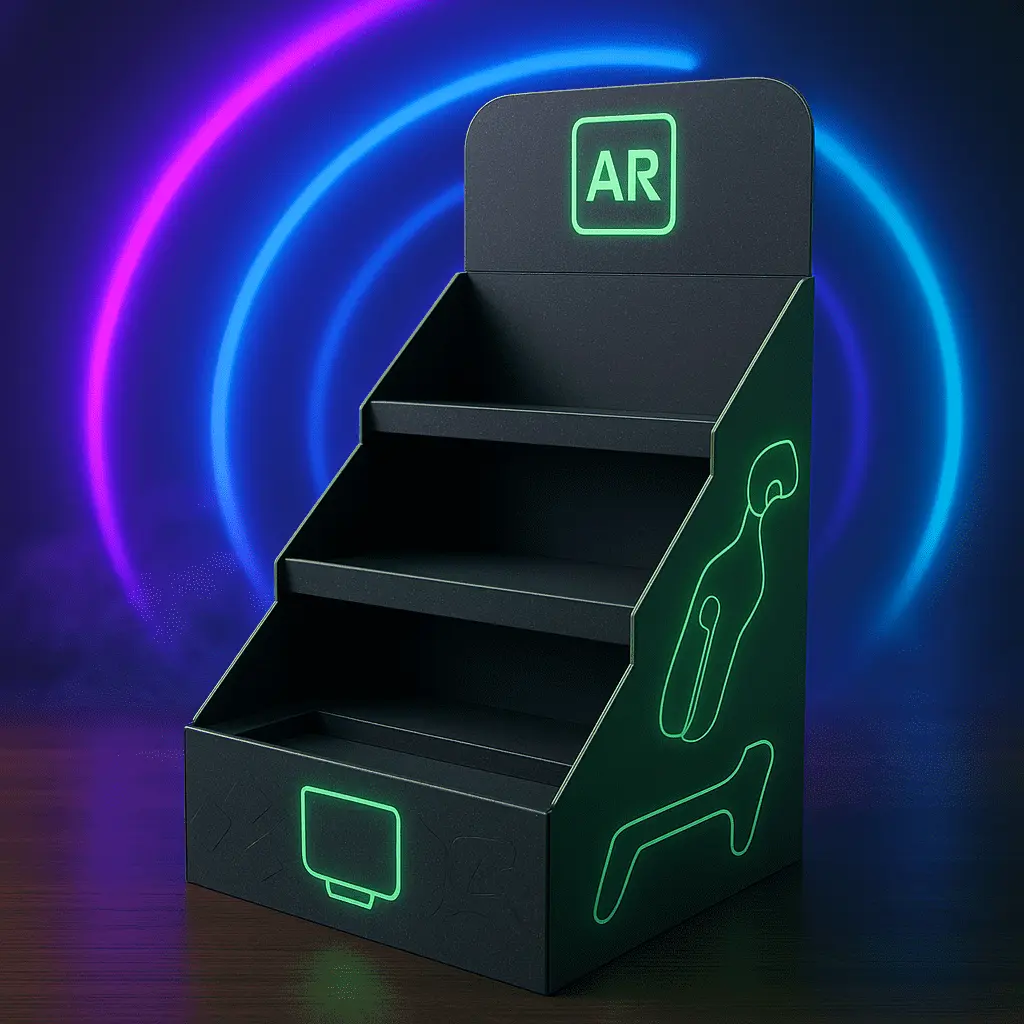Understanding POS Displays and Their Impact on Consumer Behavior
Types of POS Displays and Their Applications
POS displays come in various forms, each designed to serve specific purposes in retail environments. Counter displays, for instance, are compact units placed near checkout areas to encourage last-minute purchases. Floor displays, on the other hand, are larger standalone units that can showcase multiple products or create themed promotions. Endcap displays, situated at the ends of aisles, capitalize on high-traffic areas to draw attention to featured items. Dump bins offer a more casual approach, inviting customers to rummage through discounted or promotional items. Digital POS displays have also gained popularity, offering interactive and dynamic content to engage tech-savvy consumers.
Psychological Triggers in POS Display Design
Effective POS displays leverage psychological triggers to influence consumer behavior. Color psychology plays a significant role, with different hues evoking specific emotions and associations. For example, red can create a sense of urgency, while blue may convey trust and reliability. The use of contrasting colors can make products stand out and grab attention. Visual hierarchy is another crucial aspect, guiding the customer's eye towards key information or products. Incorporating elements of scarcity, such as "limited time offer" messaging, can create a sense of urgency and drive immediate action. Social proof, like customer testimonials or award badges, can also be integrated into displays to build credibility and encourage purchases.
Measuring the Effectiveness of POS Displays
To maximize the impact of POS displays, retailers must continually assess and refine their strategies. Sales data analysis is a fundamental approach, comparing product performance before and after display implementation. Foot traffic patterns can be monitored to evaluate the effectiveness of display placement and customer engagement. Customer surveys and feedback provide valuable insights into the display's appeal and influence on purchasing decisions. Advanced technologies, such as eye-tracking studies and heat mapping, offer detailed information on how customers interact with displays. A/B testing different display designs or placements can help optimize performance and identify the most effective strategies for boosting sales.
Strategies for Maximizing POS Display Effectiveness
Optimal Placement and Layout Considerations
The strategic placement of POS displays is paramount to their success in driving sales. High-traffic areas, such as near entrances, checkout counters, and main aisles, are prime locations for capturing customer attention. However, it's essential to avoid cluttering these spaces, as overcrowding can lead to customer frustration and reduced effectiveness. Consider the natural flow of foot traffic within the store and position displays to complement this movement. Cross-merchandising techniques, where complementary products are displayed together, can encourage additional purchases and increase average transaction values. Regularly rotating display locations can also keep the store environment fresh and engaging for repeat customers.
Crafting Compelling Visual and Textual Elements
The visual appeal of POS displays is crucial in attracting and retaining customer interest. High-quality graphics, vibrant colors, and clear, legible text are essential components of an effective display. Product packaging should be showcased in a way that highlights its unique features and benefits. Incorporating lifestyle imagery can help customers envision the product in use and create an emotional connection. Concise, benefit-driven messaging is key to communicating value propositions quickly. Use action-oriented language and clear call-to-actions to guide customers towards making a purchase. Consider incorporating QR codes or NFC technology to provide additional product information or special offers, bridging the gap between physical and digital experiences.
Seasonal and Promotional Display Strategies
Adapting POS displays to align with seasonal trends and promotional events can significantly boost their effectiveness. Holiday-themed displays create a sense of urgency and tap into the festive spirit, encouraging impulse purchases. Back-to-school seasons, summer promotions, and other cyclical events provide opportunities to create targeted displays that resonate with specific customer needs. Limited-time offers and exclusive promotions can be highlighted through POS displays to drive immediate action. Collaborating with suppliers on promotional campaigns can lead to more impactful displays and potentially reduce costs through shared resources. Regularly updating displays to reflect current trends and promotions keeps the store environment dynamic and encourages repeat visits from customers eager to see what's new.
Integrating POS Displays with Omnichannel Retail Strategies
Bridging the Gap Between Online and Offline Experiences
In today's interconnected retail landscape, POS displays play a crucial role in creating a seamless omnichannel experience. QR codes on displays can link to product videos, customer reviews, or exclusive online content, enriching the in-store experience with digital elements. Displays featuring products that are trending online can help bridge the gap between virtual and physical shopping environments. Incorporating digital screens into POS displays allows for real-time updates of pricing, stock levels, and promotional offers, ensuring consistency across all channels. Click-and-collect services can be promoted through POS displays, encouraging customers to explore the convenience of online ordering combined with in-store pickup.
Leveraging Data for Personalized POS Display Strategies
The integration of data analytics with POS display strategies offers opportunities for highly targeted and personalized promotions. By analyzing customer purchase history and preferences, retailers can create displays that resonate with specific customer segments. Dynamic digital displays can adapt content based on real-time data, such as weather conditions or local events, to showcase relevant products. Loyalty program information can be incorporated into displays, offering personalized recommendations or exclusive deals to members. Beacon technology can be used to send push notifications about nearby displays or promotions to customers' smartphones, enhancing the interactive shopping experience.
Future Trends in POS Display Technology
The future of POS displays is being shaped by emerging technologies that promise to revolutionize the retail experience. Augmented reality (AR) displays allow customers to visualize products in real-world settings before making a purchase decision. Interactive touchscreens can provide detailed product information, comparisons, and even facilitate transactions directly from the display. Artificial intelligence can be employed to analyze customer behavior and optimize display content in real-time. Voice-activated displays are emerging as a hands-free option for customers to explore product information and features. As sustainability becomes increasingly important, eco-friendly materials and energy-efficient digital displays are likely to gain prominence in POS display design.
Conclusion
POS displays remain a powerful tool in the retail arsenal, capable of significantly boosting sales when implemented strategically. By understanding consumer behavior, leveraging psychological triggers, and integrating with omnichannel strategies, retailers can create compelling displays that drive engagement and purchases. As technology continues to evolve, the future of POS displays promises even more innovative and personalized experiences for shoppers. Retailers who embrace these advancements and continuously refine their display strategies will be well-positioned to thrive in the competitive retail landscape, enhancing the shopping experience and driving sales growth.
FAQs
How effective are POS displays in increasing sales?
POS displays can significantly boost sales, with studies showing increases of up to 30% for featured products.
What are the key elements of a successful POS display?
Effective POS displays typically include eye-catching design, strategic placement, clear messaging, and product relevance to the target audience.
How often should POS displays be updated?
The frequency of updates depends on factors like seasonality and promotions, but generally, refreshing displays every 4-6 weeks helps maintain customer interest.
Enhance Your Retail Sales with Custom POS Displays | Fetching Printing
At Fetching Printing, we specialize in creating high-impact, custom POS displays tailored to your unique retail needs. Our expert team combines innovative design with premium materials to craft displays that captivate customers and drive sales. As a leading manufacturer and supplier in the packaging industry, we offer comprehensive solutions from concept to production. Elevate your retail strategy with our cutting-edge POS displays. Contact us at support@fetchingprinting.com to explore how we can boost your sales today.
References
Smith, J. (2022). The Psychology of Point-of-Sale Marketing: Influencing Consumer Behavior. Journal of Retail Psychology, 15(2), 78-92.
Johnson, A., & Brown, T. (2021). Maximizing ROI: Strategies for Effective POS Display Implementation. Retail Business Review, 33(4), 112-128.
Chen, L. (2023). The Evolution of POS Displays in the Digital Age. International Journal of Retail Technology, 9(1), 45-61.
Williams, R., & Davis, K. (2022). Omnichannel Integration: Bridging Online and Offline Retail Experiences. Journal of Marketing Innovation, 18(3), 201-217.
Thompson, E. (2021). Sustainable POS Display Solutions: Meeting Consumer Demands for Eco-Friendly Retail. Green Retail Quarterly, 7(2), 88-103.
Garcia, M., & Lee, S. (2023). The Impact of Augmented Reality on POS Displays and Consumer Engagement. Tech in Retail Journal, 12(4), 156-172.





